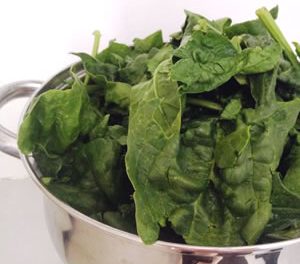I have not yet been to Turkey, so eating in restaurants is how I have come to know and love this deeply traditional cuisine. I have tried Turkish dishes in so many restaurants around the country that I now have favorite dishes and can recognize when they are well prepared. In my opinion, the best Turkish restaurants are understated, and their food memorable.
I can't give you the name of the best Turkish restaurant in New York City, where I live, because the chef, who is key to that reputation, is a notoriously passionate, prickly character who resigns and changes employers anytime an owner disagrees with him. As a result, the restaurant where Orhan happens to be cooking at any given moment is the one serving the best Turkish food, I think, in Manhattan.
By now, Orhan knows me and aids my attempts at Turkish cooking. His first rule is, �Always buy the best ingredients.� That includes selecting leeks no fatter than your thumb, eggplants that feel hefty for their size, with skin as smooth and shiny as a polished table, and dried beans that look plump, never wrinkled, discolored, or split.
Orhan's second rule is to perfect the balance of flavors in a dish, then let it alone. To him, the freshness, spices and flavorful simplicity of Turkish food are meant to please consistently, not to be a platform for creative cooking. The excellence of his eggplant patlikan, a smoky, creamy pur�e, and the sharp citrus and mellow olive oil flavors in his marinated leeks two common Turkish dishes demonstrate how everyday food, when well done, can be more enticing than the most imaginative dishes.
With Orhan's guidance, this is how I make the leeks, a perfect dish in February, when so few fresh vegetables are at their best. The sweetness of fresh lemon juice is important. For the carrots, Orhan has taught me that the bigger and fatter, the sweeter they are. Turks cook white rice with the vegetables, but I prefer using brown rice. Since it cooks more slowly, I add it to the dish already cooked. Serve these meltingly soft leeks at room temperature as a side dish, or to start with, in place of a salad.
Turkish Leeks and Carrots
Makes 4 servings or 3-1/2 cups.
Ingredients
- 4 medium leeks, about 1 1/2 pounds
- 1 Tbsp. extra virgin olive oil
- 1/2 cup diced onion
- 1 large carrot, cut into 3/8� slices
- 1-1/2 cups fat-free, reduced-sodium chicken broth
- 1/4 cup cooked brown basmati rice
- 1 tsp. freshly-minced lemon zest
- Juice of 1/2 lemon, about 2 tablespoons
- 1 tsp. sugar
- Salt and freshly groundground black pepper
- 2 Tbsp. chopped fresh dill
Directions
- Cut off the root tip of the leeks. Starting at the bottom, cut the white part into 3/4� rounds, stopping 1� into the light green part. Wash and dry the sliced leeks.
- Heat the oil over medium-high heat in a skillet or Dutch oven large enough to hold the vegetables in one layer. (A tight-fitting cover is also needed.) Saut� the onions until translucent, 3 to 4 minutes. Add the leeks and carrots and cook until the onions are soft, 2 minutes longer, taking care not to let the vegetables color.
- Add the broth, rice, lemon zest, juice and sugar. Bring to a boil, reduce the heat, cover and simmer until the leeks are al dente, about 15 minutes. Uncover and cook until the leeks are very tender and the liquid is reduced and soupy, 10 to 15 minutes.
- Transfer mixture to a serving dish and cool to room temperature. Season to taste with salt and pepper. Before serving, sprinkle with the dill. Or cover and refrigerate for up to 2 days; let sit at room temperature for 20 minutes and add the dill before serving.
Nutritional Information Per Serving:
121 calories
4 g. total fat
Less than 1 g. saturated fat
20 g. carbohydrate
3 g. protein
3 g. dietary fiber
231 mg. sodium
Diabetic Exchanges: 1 Bread/Starch, 1 Vegetable
AICR








